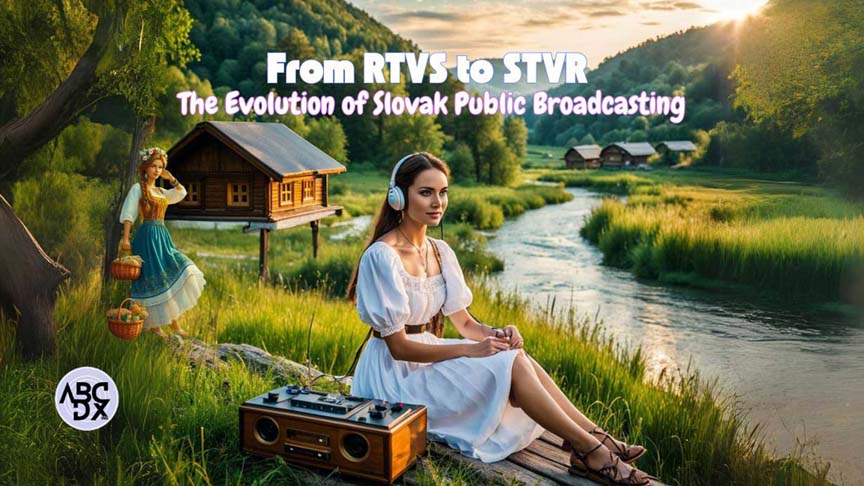The landscape of Slovak public broadcasting has undergone a significant transformation with the recent replacement of RTVS (Rozhlas a televízia Slovenska) by the newly established STVR (Slovenská televízia a rádio). This change, effective from July 1, 2024. Follows the last-minute signing of the Slovak Television and Radio Act by President Peter Pellegrini. As a radio hobbyist and dedicated listener of Radio Slovakia International, I find this Transformation from RTVS to STVR particularly noteworthy. The reformation aims to modernize and streamline the country's public broadcasting services. Although it has sparked considerable debate and raised questions about its alignment with European law and its immediate operational challenges.
A Brief History of RTVS
RTVS established in 2011 through the merger of Slovak Television (STV) and Slovak Radio (SRo). This unification aimed to create a more efficient and cohesive public broadcasting service for Slovakia. Over the years, RTVS became a vital part of Slovak culture, providing diverse content ranging from news and educational programs to entertainment and cultural broadcasts. It was a member of the European Broadcasting Union (EBU), ensuring that Slovak broadcasting standards were aligned with those of other European countries.
The Transformation from RTVS to STVR
The transition from RTVS to STVR formalized on July 1, 2024. President Peter Pellegrini signed the Slovak Television and Radio Act (STVR). This move was somewhat controversial. It was signed at the last minute on June 30, narrowly avoiding a constitutional conflict. Constitutional lawyer Vincent Bujňák highlighted that if the President had delayed his signature, it would have required a veto, complicating the legislative process.
The change was met with mixed reactions. International institutions, including the EBU, expressed concerns that the new legislation might conflict with European law. President Pellegrini responded by hoping that European authorities would apply consistent standards to Slovakia. EU has done this in other countries undergoing similar transitions.
from RTVS to STVR: New Leadership and Challenges
With the enactment of the STVR Act, the organization faced immediate leadership changes. The mandate of RTVS's Director General, Ľuboš Machaj, ended on June 30. And the organization legally dissolved. Igor Slanina, a former director of Media RTVS, appointed as the statutory officer for STVR by Deputy Speaker of Parliament Peter Žiga. His term will last from July 1 to September 30, 2024.
The opposition raised concerns about the lack of oversight for the new statutory officer, prompting plans to challenge the STVR Act in the Constitutional Court. This period marks a critical transition for Slovak public broadcasting. The future of STVR depending on how it navigates these initial challenges and establishes its operational and governance structures.
Reflecting on the Future
It is essential to remember the rich legacy of RTVS and its contributions to Slovak society. The new institution has the potential to build on this foundation, adapting to modern broadcasting needs. While preserving the cultural and informational integrity that Slovak audiences have come to trust.
For radio enthusiasts like myself, this transformation is both exciting and uncertain. The commitment to public broadcasting's core values will determine whether STVR can achieve the same level of respect and reliability that RTVS enjoyed. As we tune in to the new broadcasts and monitor the developments, we remain hopeful that STVR will uphold the high standards of Slovak public media.


Comments are closed!